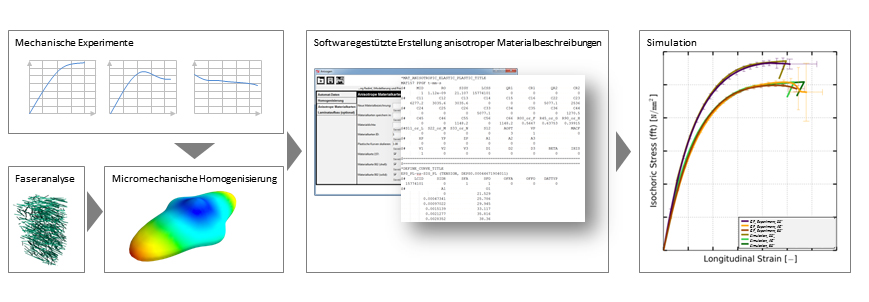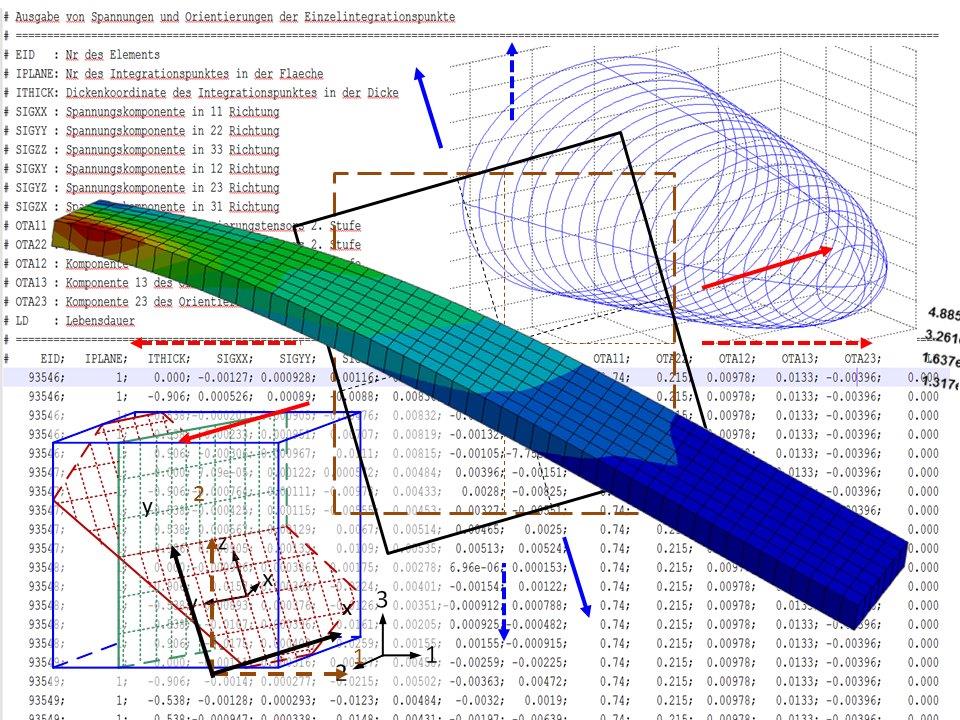Optimized design of short-fiber-reinforced plastic components
In recent years, companies and research institutions have increasingly turned their focus to optimizing the design of plastic components. As part of this, methods with varying degrees of complexity are being developed to account for process-related component properties. The aim of integrative simulation is to achieve a design that is optimized in terms of space and materials while ensuring a high level of operational reliability at the same time, making the development process more economical.


Integrative simulation
The department Polymer Processing and Component Design has been working in the abovementioned areas for many years. When designing components made of short-fiber-reinforced plastics, it is important to not only consider the dominant characteristic – the local anisotropic material properties – but also other influencing factors such as multiaxial stress states, high stress gradients, mean stress levelsorinfluences of environmental conditions such as fluids an gases. In order to obtain the most reliable information possible about the stresses in the component and its expected service life, it helps to use a closed numerical process chain that takes the manufacturing process into account.
As part of an in-house research project in collaboration with several of our industry partners, we identified the most pressing issues for designing short-fiber-reinforced plastic components. From the integrative simulation of the entire process chain, two issues were singled out and explored further: structure simulations with varying degrees of detail, and service life calculations based on these simulations. This exploration showed that for anisotropic materials, particular focus is needed on designing components that are operationally stable under any multiaxial stresses, as not only multiaxial but also uniaxial vibration loads lead to localized multiaxial vibration stresses. The material’s strength is also dependent on the direction of stress.
These findings must be taken into account when selecting an appropriate hypothesis for estimating a component’s service life. This means that the processes commonly used for assessing the strength of isotropic materials under multiaxial stresses (e.g. classic equivalent stress hypotheses) are unsuitable for anisotropic materials. Instead, methods must be used that enable evaluation of the time-dependent multiaxial stress in relation to load level and direction.
Within the framework of an in-house research project, the most pressing questions concerning the design of short-fiber-reinforced plastic components were identified in cooperation with a large number of our industrial partners. From the entire process chain of integrative simulation, the topics of structural simulation, with consideration of various degrees of detail, and the service life calculation based on it were singled out and further developed. For example, arbitrary multiaxial stress states in anisotropic materials have to be particularly considered for the fatigue-resistant component design, since not only multiaxial but also uniaxial vibration loads lead locally to multiaxial vibration stresses. In addition, the strength of the material is directionally dependent.
These findings must be taken into account when selecting a suitable hypothesis for service life estimation. This means that the methods commonly used in the isotropic case for strength assessment of multiaxial stress conditions (e.g. classical equivalent stress hypotheses) are unsuitable for the anisotropic case. Instead, approaches must be used that allow the time-dependent multiaxial stress to be assessed as a function of the stress level and direction.
 Fraunhofer Institute for Structural Durability and System Reliability LBF
Fraunhofer Institute for Structural Durability and System Reliability LBF